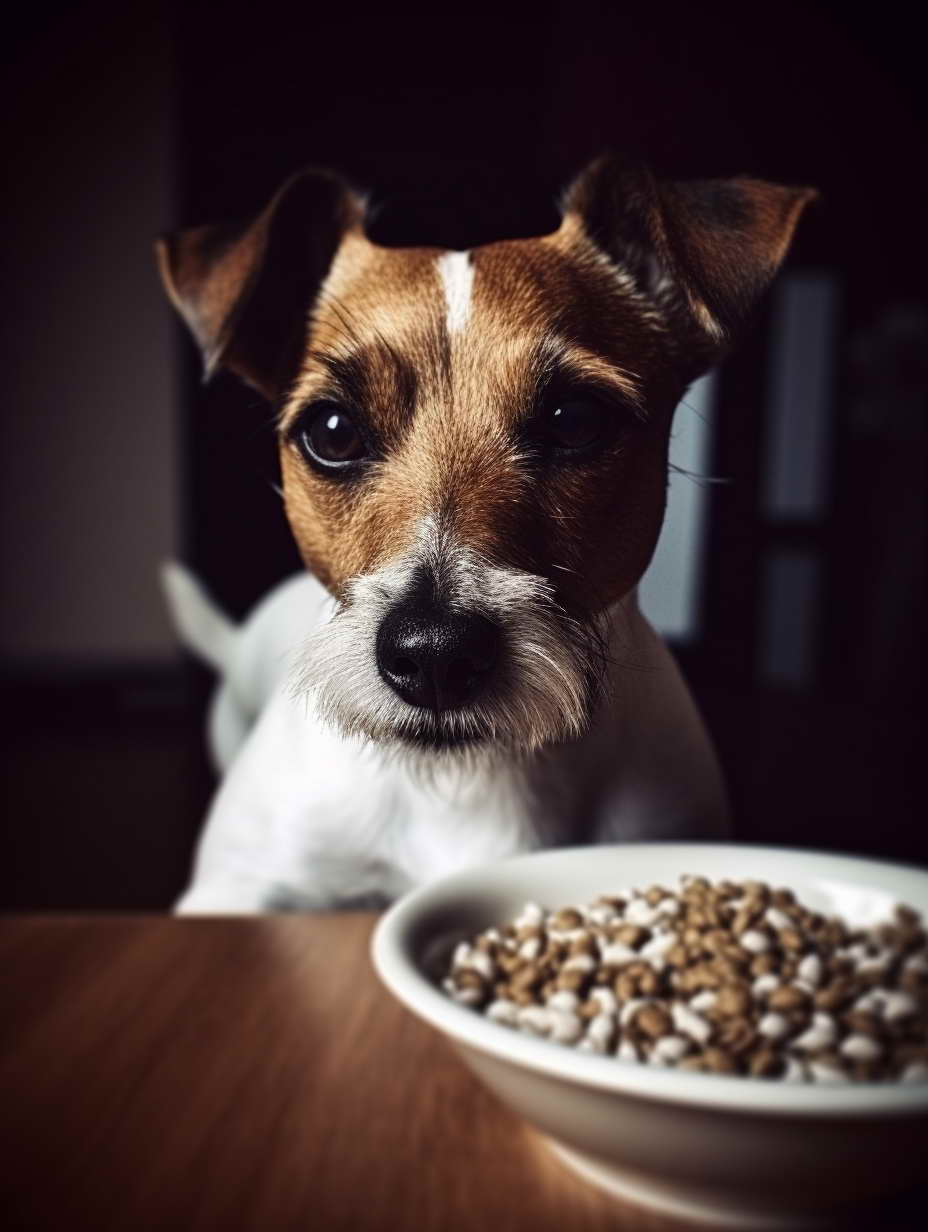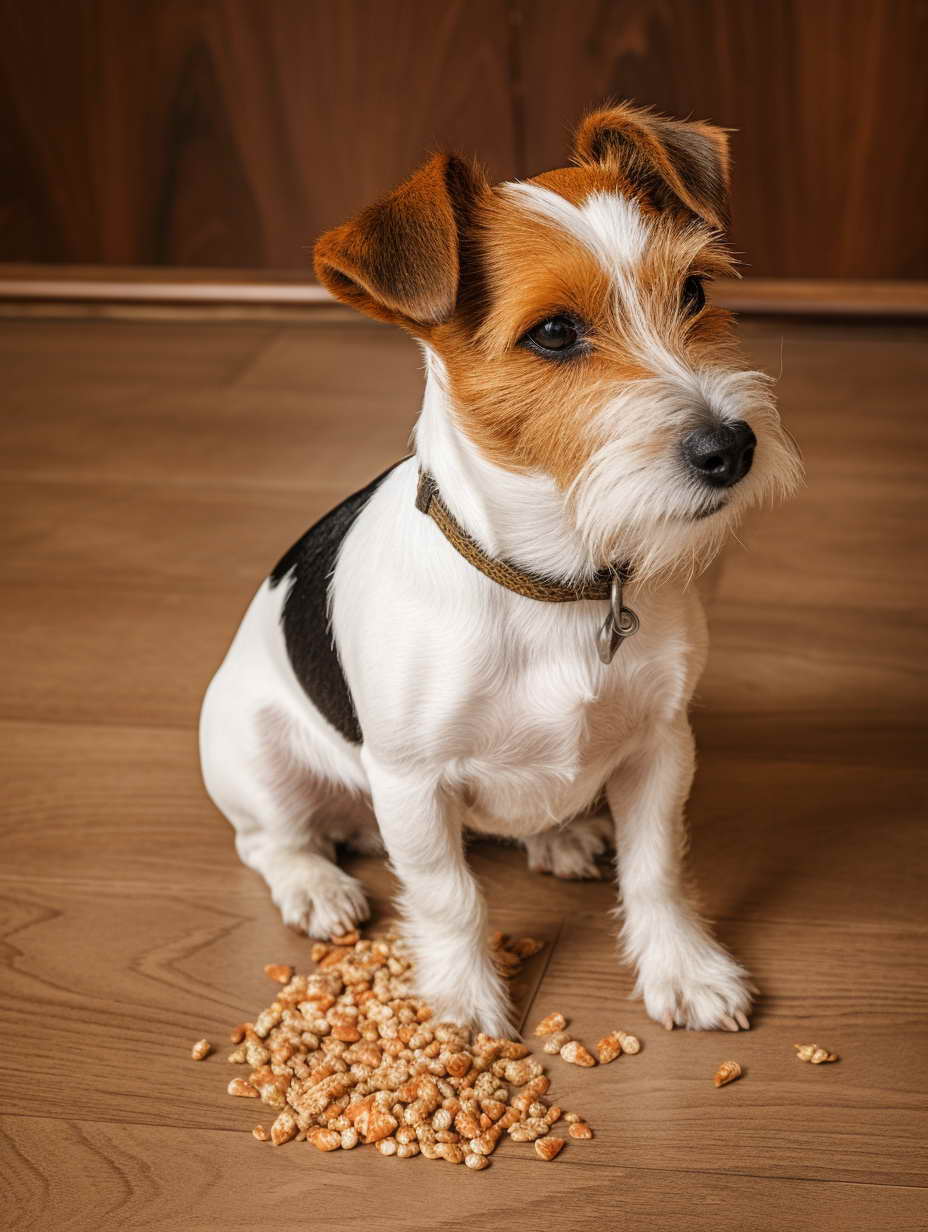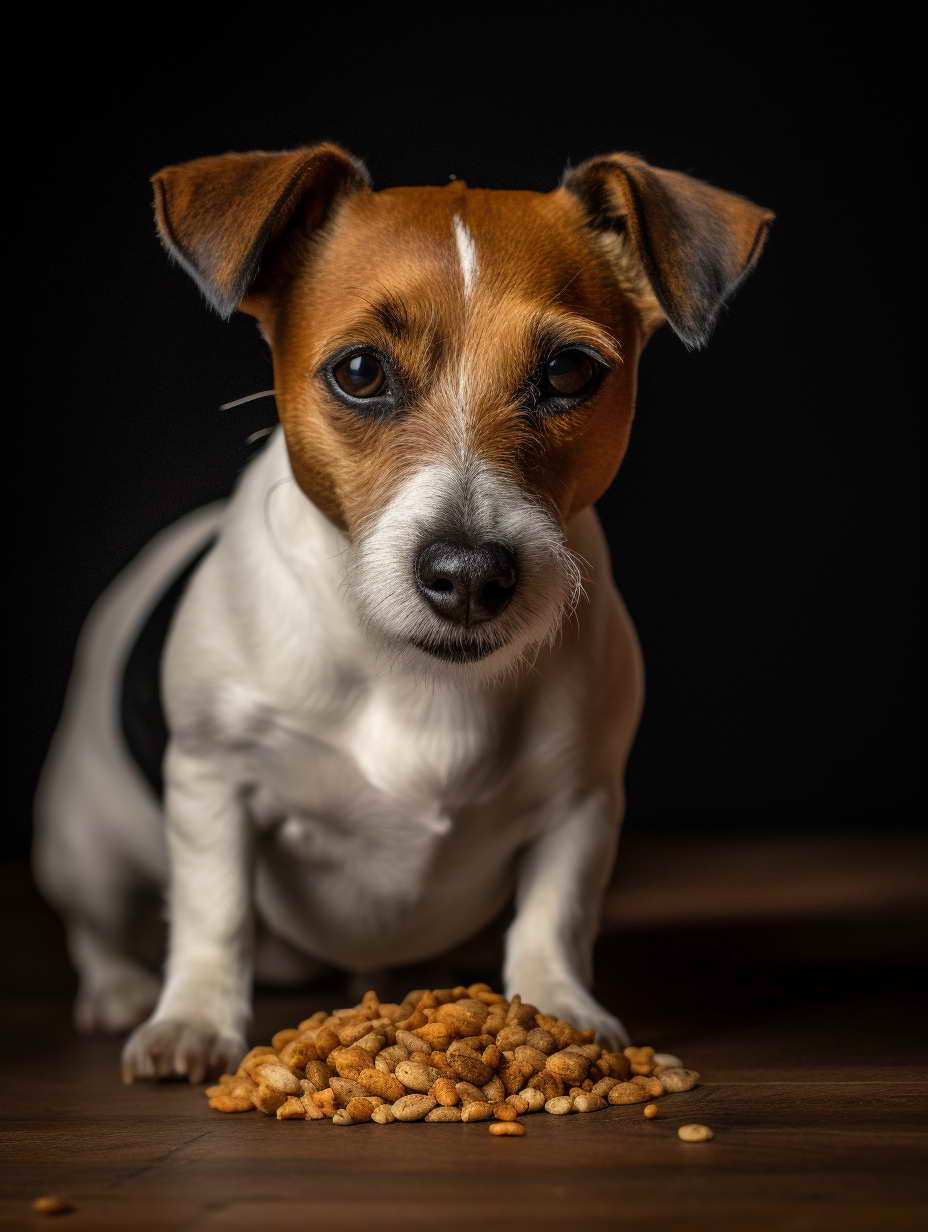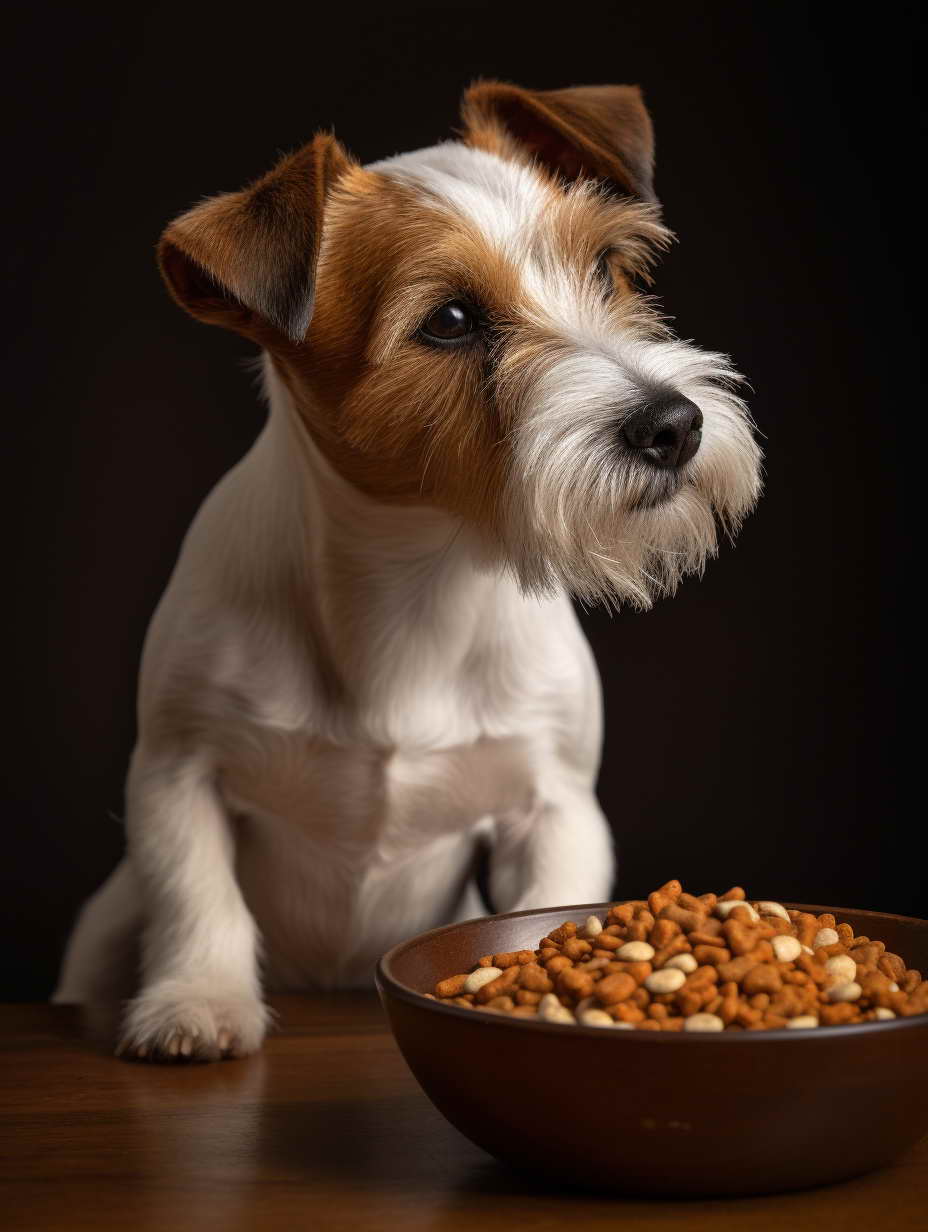10 Essential Dog Food Poison Remedy Tips to Safeguard Your Furry Friend’s Health
Introduction
Dog food poisoning can be a pet owner’s worst nightmare. Our beloved furry companions can accidentally ingest harmful substances, leading to severe health issues. As responsible pet parents, it’s crucial to be well-informed about effective remedies for dog food poisoning to ensure our four-legged friends stay happy and healthy. In this comprehensive guide, we will cover essential tips, insights, and answers to frequently asked questions regarding dog food poison remedies.
Recognizing the Symptoms
When it comes to safeguarding your furry friend’s health, knowledge is your greatest ally. Recognizing the symptoms of dog food poisoning is crucial for providing timely and effective treatment. Dogs, like humans, can fall victim to food poisoning, and the signs can range from mild to severe. Here, we’ll delve into the key symptoms you should watch for:
Vomiting
Vomiting is often one of the earliest and most noticeable signs of food poisoning in dogs. If your dog suddenly begins vomiting repeatedly or experiences persistent vomiting, it’s a clear indicator that something is amiss. Keep an eye on the frequency and consistency of the vomit, as this information can be valuable when you consult your veterinarian.
Diarrhea
Another common symptom of dog food poisoning is diarrhea. Loose, watery stools that occur more frequently than usual could be a sign that your dog has ingested something harmful. Diarrhea can quickly lead to dehydration, so it’s essential to address it promptly.
Lethargy
Pay attention to your dog’s energy level. If they become unusually lethargic, sluggish, or less interested in activities they usually enjoy, it could be an indication of food poisoning. Lethargy often accompanies other symptoms and is a signal that your dog is feeling unwell.
Loss of Appetite
Dogs are known for their hearty appetites, so a sudden loss of interest in food is cause for concern. If your dog refuses meals or snacks that they would typically devour eagerly, it’s time to investigate further. Loss of appetite can lead to weakness and exacerbate other symptoms.
Excessive Drooling
Excessive drooling, or hypersalivation, is another symptom to be aware of. While some breeds naturally drool more than others, a sudden increase in drooling unrelated to excitement or food anticipation may indicate distress. Check for any unusual odors or substances in the drool.
It’s important to remember that these symptoms are not exclusive to food poisoning and can be indicative of other health issues as well. If you observe one or more of these signs in your dog, especially if they persist or worsen, consult your veterinarian immediately. Your vet can conduct a thorough examination, run diagnostic tests, and provide the appropriate treatment to ensure your furry companion’s swift recovery.

Immediate Action
When you suspect that your beloved canine companion has ingested something potentially harmful, taking immediate action is paramount to their well-being. Acting swiftly can make a significant difference in the outcome. Here are the crucial steps to take as part of your immediate response:
Contact Your Vet
The first and most crucial step is to reach out to your veterinarian. Inform them of the situation and provide as much information as possible. Describe the symptoms your dog is experiencing, the potential toxin they may have ingested, and any other relevant details. Your vet can guide the best course of action tailored to your dog’s specific situation.
Isolate Your Dog
To prevent further exposure to the contaminated food or substance, isolate your dog in a safe and secure area. This step is essential not only for their safety but also to contain any potential hazards. Make sure the environment is comfortable and free from items that could exacerbate their condition.
Hydration
Ensure that your dog has access to fresh water at all times. Hydration is crucial, especially if vomiting or diarrhea is present, as it can lead to dehydration. Encourage your dog to drink small sips of water frequently. Avoid giving large amounts of water all at once, as this can further upset their stomach.
Gather Information
While waiting for guidance from your vet, gather information about the potential toxin. If you have the packaging or any remnants of the ingested substance, keep them handy. This information can be vital for your veterinarian’s assessment and decision-making.
Avoid Home Remedies Without Vet Approval
It’s essential to resist the urge to administer home remedies without consulting your veterinarian first. While some remedies may be helpful, others can be harmful or ineffective, depending on the situation. Your vet will provide expert guidance on whether inducing vomiting or administering specific treatments is appropriate.
Stay Calm
In a stressful situation like this, it’s crucial to remain as calm as possible. Dogs are highly attuned to their owner’s emotions, and your composure can help reduce your dog’s anxiety. Keep a reassuring and soothing tone when interacting with your pet.
Transport Safely
If your veterinarian advises bringing your dog to their clinic, ensure safe transportation. Use a carrier or leash to secure your dog and prevent any further ingestion of toxins during the journey. If your dog is exhibiting severe symptoms, consider having someone accompany you to assist during the trip.

Inducing Vomiting
Inducing vomiting in dogs is a potentially life-saving measure in cases of accidental ingestion of harmful substances. However, it’s important to note that this should only be done under the guidance and approval of a veterinarian. Attempting to induce vomiting at home without proper instruction can lead to complications or be ineffective. Here’s what you need to know about this critical step:
When Is Vomiting Induction Necessary?
Vomiting induction is typically recommended when your dog has ingested a toxic substance, such as certain human foods, household chemicals, or harmful plants. It’s essential to act quickly, as inducing vomiting is most effective within two hours of ingestion. After this window, the substance may have already moved further into the digestive system.
Consult Your Vet
Before attempting to induce vomiting, contact your veterinarian or an emergency pet poison hotline. Describe the situation, including the type and amount of the ingested substance, your dog’s size, and any symptoms they may be experiencing. Your vet will assess the situation and provide specific instructions.
Hydrogen Peroxide Method
If your vet approves, they may recommend using hydrogen peroxide to induce vomiting. Here’s how to do it:
- Measure Accurately: Use a syringe or teaspoon to administer the appropriate amount of 3% hydrogen peroxide based on your dog’s weight. Your vet will provide the precise dosage.
- Administer Gradually: Gently place the hydrogen peroxide in your dog’s mouth, ideally using a syringe without the needle. Ensure your dog swallows it.
- Wait for Vomiting: Vomiting should occur within 10-15 minutes. If it doesn’t, you can administer one more dose as directed by your vet.
Observing the Process
Be prepared for your dog to vomit within minutes. Ensure they are in an easily cleanable area to avoid staining carpets or furniture. Once your dog has vomited, examine the contents to see if the ingested substance is visible.
Follow-Up Care
After vomiting, contact your veterinarian immediately. They will guide you on the next steps, which may include further treatment, monitoring, or additional instructions based on the nature of the ingested toxin.
Caution and Considerations
It’s essential to exercise caution when attempting to induce vomiting and to follow your vet’s guidance closely. Inducing vomiting is not suitable for all situations, and some substances can be more harmful when regurgitated. Never induce vomiting if your dog has ingested sharp objects or caustic substances, or if they are unconscious.
Activated Charcoal
Activated charcoal is a valuable tool in the treatment of dog food poisoning and the ingestion of harmful substances. It is known for its ability to adsorb (bind to) toxins and prevent their absorption by the body. However, like many treatments, it should be administered under the guidance of a veterinarian. Here’s what you need to know about using activated charcoal in emergencies:
The Role of Activated Charcoal
Activated charcoal is a form of carbon that has undergone a process to make it highly porous and capable of adsorbing toxins. When administered to a dog, it can bind to harmful substances in the stomach and intestines, preventing their absorption into the bloodstream. This can be particularly useful when your dog has ingested a poisonous substance.
When to Use Activated Charcoal
Activated charcoal is most effective when used within a short time after the ingestion of a toxic substance. It is typically used for toxins that are not effectively removed through vomiting or when vomiting is contraindicated. Your veterinarian will assess the situation and determine if activated charcoal is appropriate.
Administering Activated Charcoal
Activated charcoal is available in liquid or powdered form. It is typically mixed with water to create a slurry that can be administered orally to your dog. Here’s how it’s done:
- Measure Accurately: Follow your veterinarian’s instructions on the amount of activated charcoal to administer based on your dog’s weight.
- Mix Thoroughly: Combine the specified amount of activated charcoal with water and stir until it forms a smooth, lump-free slurry.
- Administer Gradually: Using a syringe or a dosing cup, gently pour the slurry into your dog’s mouth. Ensure they swallow it.
Follow-Up Care
After administering activated charcoal, your veterinarian will provide further guidance on the next steps. This may include additional treatments, monitoring your dog’s condition, or specific dietary recommendations during recovery.
Caution and Considerations
While activated charcoal can be effective in certain cases, it’s important to recognize that it may not be suitable for all situations. Your vet will determine its appropriateness based on the type of toxin ingested and the timing of administration. Additionally, activated charcoal can cause black stools, which is a normal side effect.
Never Self-Medicate
Never attempt to administer activated charcoal to your dog without professional guidance. The dosage and timing are crucial, and misuse can be harmful. Always consult your veterinarian or an emergency pet poison hotline for specific instructions.

Fluid Replacement
In cases of dog food poisoning, maintaining proper hydration is paramount for your pet’s recovery. Vomiting and diarrhea can lead to significant fluid loss, potentially resulting in dehydration. Here’s what you need to know about fluid replacement to ensure your furry friend stays well-hydrated during this challenging time:
The Importance of Hydration
Hydration is crucial for every living creature, and dogs are no exception. Water is vital for various bodily functions, including digestion, circulation, temperature regulation, and toxin elimination. When a dog experiences food poisoning, the body may lose fluids through vomiting and diarrhea, making it essential to replace these losses promptly.
Offering Fresh Water
The most straightforward way to maintain your dog’s hydration is by providing access to fresh, clean water at all times. Ensure that your dog’s water bowl is always filled, and consider placing multiple bowls around the house, especially if your pet is reluctant to move due to illness.
Oral Rehydration Solution
In some cases, your veterinarian may recommend using an oral rehydration solution (ORS) to replenish lost fluids and electrolytes. These solutions are specifically formulated to help dogs recover from dehydration. You can administer an ORS by following these steps:
- Consult Your Vet: Contact your veterinarian to confirm the need for an ORS and obtain a suitable product or recipe.
- Administer Gradually: Use a syringe or a dosing cup to offer the ORS to your dog in small, frequent amounts. This helps prevent overloading their stomach and ensures better absorption.
- Monitor Intake: Keep track of how much ORS your dog consumes, and report this information to your veterinarian.
Recognizing Dehydration
It’s essential to monitor your dog for signs of dehydration, as this can worsen their condition. Common signs of dehydration in dogs include:
- Sunken eyes
- Dry or sticky gums
- Loss of skin elasticity (the skin doesn’t spring back when gently pulled)
- Increased heart rate
- Weakness or lethargy
If you observe any of these symptoms, contact your veterinarian immediately for further guidance. Dehydration can escalate quickly and may require more intensive treatment.
Gradual Food Introduction
As your dog begins to recover, consider reintroducing food gradually. Start with small amounts of bland food, such as boiled rice and chicken, to ease their stomach and prevent further distress. Ensure that your dog continues to have access to water throughout this process.
Professional Guidance
Always consult your veterinarian when dealing with dog food poisoning and dehydration. They can assess the severity of your dog’s condition and provide personalized recommendations for fluid replacement and overall care.
A Bland Diet
After your dog has experienced food poisoning, transitioning them to a bland diet is a crucial step in their recovery process. A bland diet is gentle on the stomach and helps soothe gastrointestinal upset caused by food poisoning. Here’s what you need to know about implementing a bland diet for your furry friend:
The Purpose of a Bland Diet
A bland diet serves multiple purposes in the recovery from food poisoning:
- Gentle Digestion: Bland foods are easy on the stomach and less likely to trigger further vomiting or diarrhea.
- Rehydration: Bland diets often include foods with higher water content, aiding in rehydration.
- Nutrient Absorption: They facilitate better absorption of nutrients at a time when your dog’s digestive system may be sensitive.
Bland Diet Options
A typical bland diet for dogs consists of a combination of white rice and lean protein. The most commonly used protein source is boneless, skinless chicken breast. Here’s how to prepare a bland diet for your dog:
- Boiled White Rice: Cook white rice following package instructions, but avoid adding any seasonings, spices, or oils. Plain white rice is easily digestible.
- Boiled Chicken: Boil boneless, skinless chicken breast until fully cooked. Ensure there are no bones or skin in the meat, as these can be difficult for dogs to digest.
- Proportions: Mix the cooked white rice and chicken in a 2:1 ratio, with two parts rice to one part chicken. This ratio can be adjusted based on your dog’s preferences and tolerance.
Transitioning to a Bland Diet
When transitioning your dog to a bland diet, follow these steps:
- Offer small, frequent meals throughout the day to avoid overwhelming the stomach.
- Begin with a small portion of the bland diet, and gradually increase the amount over a few days.
- Monitor your dog’s reaction to the diet, including any changes in their stool or symptoms.
Duration of the Bland Diet
The duration of the bland diet depends on your dog’s response and the severity of their food poisoning. In most cases, it is recommended to continue the bland diet for several days to allow the digestive system to settle. Consult your veterinarian for specific guidance on when to reintroduce your dog’s regular diet.
Hydration
While your dog is on a bland diet, continue to ensure they have access to fresh water at all times. Proper hydration is essential for their recovery.
Monitoring Progress
As your dog starts to eat a bland diet, pay close attention to their symptoms. Improvements in appetite and a reduction in vomiting or diarrhea are positive signs that the bland diet is helping. If symptoms persist or worsen, consult your veterinarian for further evaluation and treatment.
Medications
In some cases of dog food poisoning, medications may be prescribed by your veterinarian to alleviate symptoms and aid in your furry friend’s recovery. Medications can play a crucial role in treating specific symptoms associated with food poisoning and addressing any underlying issues. Here’s what you need to know about medications in the context of food poisoning in dogs:
Types of Medications
The type of medications prescribed by your veterinarian will depend on the specific symptoms and severity of your dog’s condition. Common medications used in the treatment of food poisoning in dogs include:
- Antiemetics: These medications help control vomiting and nausea, providing relief to your dog and preventing further fluid loss.
- Antidiarrheal Medications: These may be prescribed to manage diarrhea and reduce gastrointestinal distress.
- Antibiotics: If a bacterial infection is suspected, antibiotics may be necessary to treat the underlying cause of food poisoning.
- Pain Medications: In cases where food poisoning has caused abdominal pain or discomfort, pain relief medications may be administered.
Administration and Dosage
It’s crucial to follow your veterinarian’s instructions regarding the administration and dosage of medications precisely. Medications may be prescribed in the form of tablets, liquids, or injections. Here are some essential considerations:
- Administer as Directed: Give medications at the recommended times and in the prescribed manner. If your dog is resistant to taking pills, ask your vet for alternative options, such as flavored liquids.
- Complete the Course: Finish the entire course of antibiotics or any other medication, even if your dog’s symptoms improve. This helps ensure that the underlying cause is completely treated.
- Monitor for Side Effects: Keep an eye out for any adverse reactions to medications and report them to your veterinarian immediately.
Special Considerations
Certain medications, such as antibiotics, can disrupt the balance of your dog’s gut flora. To mitigate this, your veterinarian may recommend probiotics or dietary changes to promote a healthy digestive system during and after treatment.
Follow-Up Care
After your dog has started medication, it’s essential to schedule follow-up appointments with your veterinarian. These appointments allow your vet to assess your dog’s progress, make any necessary adjustments to the treatment plan, and ensure a full recovery.
Preventive Measures
While treating food poisoning is essential, preventing future incidents is equally crucial. Be diligent in storing pet food securely, checking for recalls, and keeping harmful substances out of your dog’s reach to minimize the risk of future poisoning incidents.
Professional Guidance
Always consult your veterinarian when your dog experiences food poisoning symptoms. They have the expertise to diagnose the specific cause of food poisoning, prescribe appropriate medications, and provide comprehensive care tailored to your pet’s needs.
Preventive Measures
Preventing dog food poisoning is a top priority for every responsible pet owner. While you can’t always predict every potential hazard, there are essential preventive measures you can take to minimize the risk of your furry friend ingesting harmful substances. Here are some key steps to ensure your dog’s safety:
Secure Food Storage
Properly storing your dog’s food is the first line of defense against food poisoning. Follow these guidelines:
- Use Airtight Containers: Transfer dry dog food into airtight containers to prevent exposure to air and moisture, which can lead to contamination.
- Check Expiration Dates: Regularly inspect the expiration dates on both dry and wet dog food. Discard any expired or spoiled products.
- Refrigerate Wet Food: If you feed your dog canned or wet food, store opened cans in the refrigerator and use them within a few days.
Be Aware of Recalls
Stay informed about pet food recalls by regularly checking the FDA’s recall website or subscribing to pet food recall alerts. If a product you have purchased is recalled, follow the manufacturer’s instructions for returning or disposing of it.
Keep Harmful Substances Out of Reach
Dogs are naturally curious and may explore their surroundings with their mouths. Take these precautions to keep hazardous items away from your pet:
- Childproof Cabinets: Use childproof locks or latches on cabinets where cleaning products, medications, and other toxic substances are stored.
- Garbage Bins: Use secure, lidded garbage bins to prevent your dog from rummaging through trash and ingesting harmful items.
- Houseplants: Be cautious with houseplants, as many can be toxic to dogs. Research the plants in your home and either remove toxic varieties or place them out of your dog’s reach.
- Pet-Proof Your Yard: If your dog spends time outdoors, ensure your yard is free of toxic plants, chemicals, and other potential hazards.
Supervise During Meals and Treats
When feeding your dog, stay nearby and supervise the process, especially if you have multiple pets. This prevents food theft or accidental ingestion of non-food items.
Provide Appropriate Toys and Chews
Offer safe, dog-specific toys and chews to satisfy your pet’s natural chewing instincts. This reduces the likelihood of them gnawing on dangerous items like electrical cords or small objects.
Pet-Proof Your Home
Walk through your home with a critical eye to identify potential hazards, such as small objects, loose cords, and accessible cleaning supplies. Pet-proofing your home can prevent accidents and poisoning incidents.
Education and Awareness
Stay educated about common food items that are toxic to dogs, such as chocolate, grapes, onions, and xylitol. Familiarize yourself with the symptoms of food poisoning so you can recognize them early and seek prompt veterinary care if needed.
Training and Obedience
Basic obedience training can also play a role in preventing food poisoning incidents. Teach your dog commands like “leave it” and “drop it” to discourage them from picking up and consuming potentially harmful substances.
Regular Veterinary Check-Ups
Schedule regular veterinary check-ups to ensure your dog’s overall health. Your vet can also guide nutrition and any specific precautions based on your dog’s breed and age.
FAQs
What causes dog food poisoning?
Dog food poisoning can result from various factors, including spoiled food, toxins, bacteria, or foreign objects.
Can I use home remedies for dog food poisoning?
It’s best to consult your vet before trying home remedies to ensure your dog’s safety.
Is it safe to induce vomiting in dogs?
Inducing vomiting should only be done under the guidance of a veterinarian.
How can I prevent my dog from ingesting harmful substances?
Store all pet food securely, check for recalls, and keep harmful substances out of reach.
What are the long-term effects of food poisoning in dogs?
Long-term effects can include organ damage or chronic health issues if not treated promptly.
When should I seek professional help for food poisoning in dogs?
Contact your vet immediately if your dog displays severe symptoms or if you’re unsure about their condition.
Conclusion
In times of dog food poisoning, swift and informed action can make all the difference in your furry friend’s recovery. By recognizing symptoms early, seeking veterinary guidance, administering appropriate remedies, and implementing preventive measures, you can ensure your dog receives the best care possible. Remember, your veterinarian is your ally in these situations, offering expert advice and tailored treatment plans to get your pet back to their happy, healthy self.

Leave a Reply